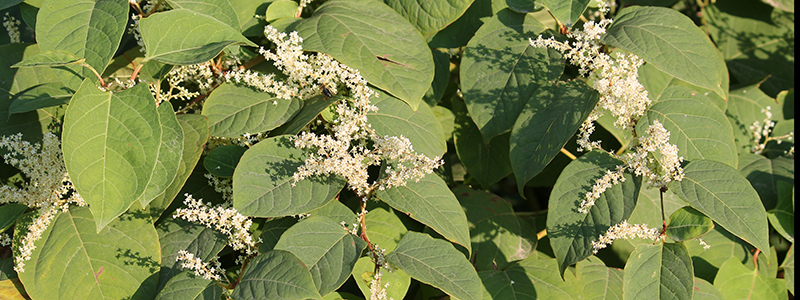
Japanese Knotweed is a non-native plant species. It is increasingly found on river banks and in woodlands, grasslands, coastal areas, urban parks and private gardens.
Japanese Knotweed is not harmful to human health, but will displace plants that are naturally present and threaten biodiversity. It has also been known to grow through brickwork, tarmac and concrete.
Japanese Knotweed identification
- cane-like stems which are green with reddish/purple speckles
- large green heart shaped or oval leaves zig-zag from the stem
- white flower sprays typically between August and October, followed by small winged fruits
It can grow up to 3 metres in height.
Who is responsible?
The management of Japanese Knotweed is the responsibility of the landowner/tenant. If you allow Japanese Knotweed to spread onto other people’s property you could be prosecuted for causing a private nuisance.
Japanese Knotweed legislation
You will not be prosecuted for having Japanese Knotweed growing on your land. However, it is an offence under the Wildlife and Countryside Act 1981 act to 'plant' or 'otherwise cause to grow in the wild' a number of non-native plant species, including Japanese Knotweed.
Disposal
It is an offence to dispose of Japanese Knotweed material in your green or household waste bin. It cannot be taken to a recycling centre.
For more information on identifying and disposing of Japanese knotweed, you can:
- Email: enquiries@environment-agency.gov.uk
- Telephone: 03708 506 506
The government website also provides further detailed information to help you.
This form helps us improve the content and structure of our webpages only, and we cannot provide a response to any submission below.

